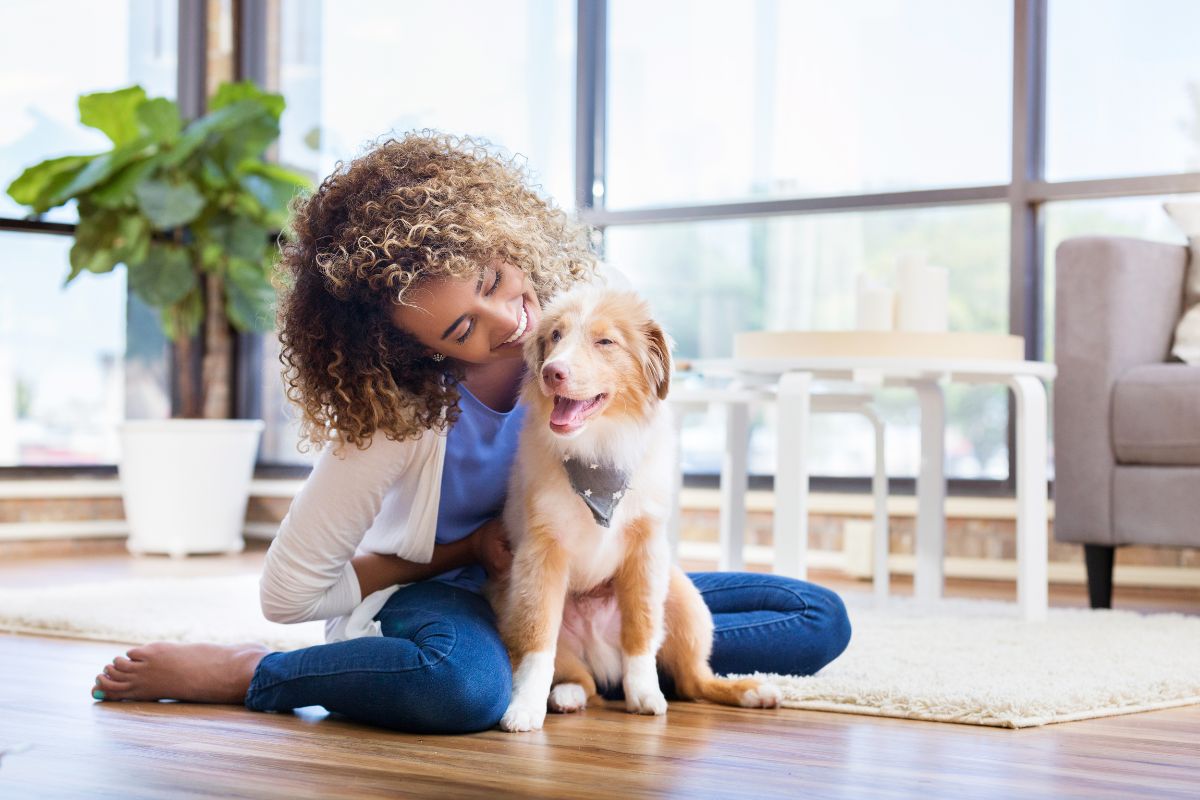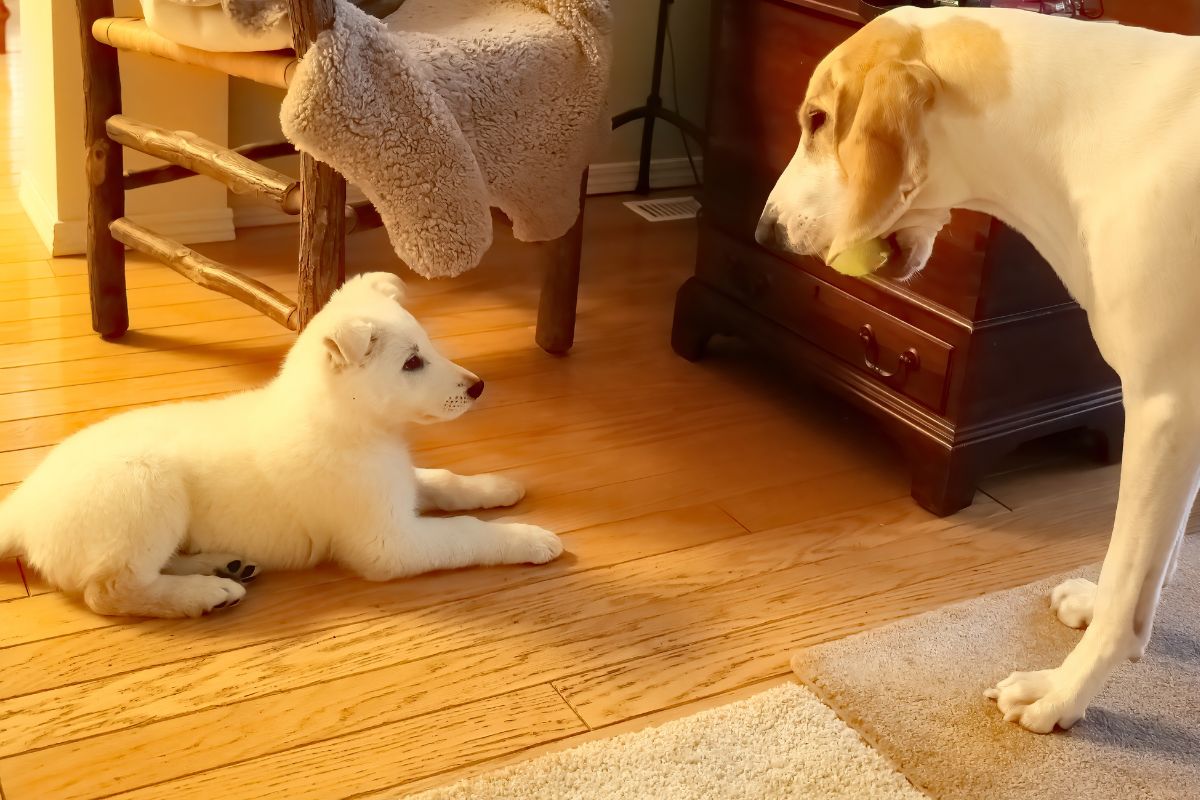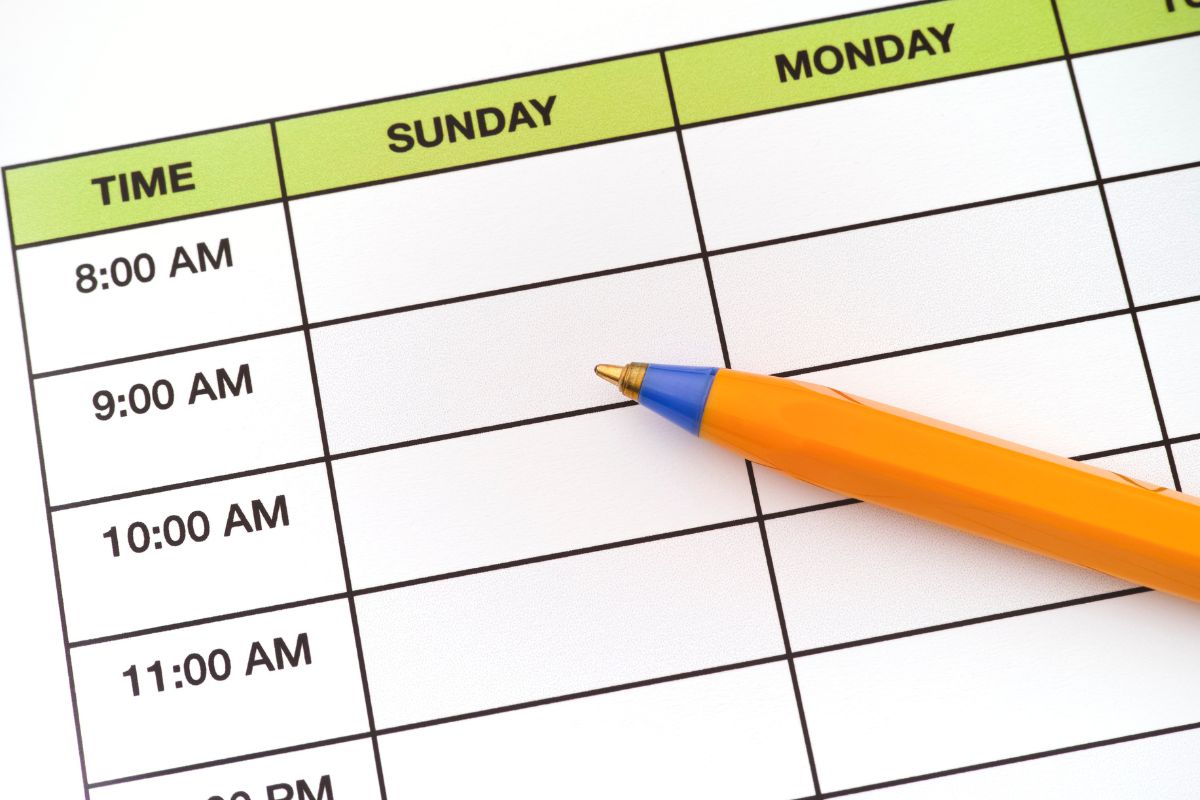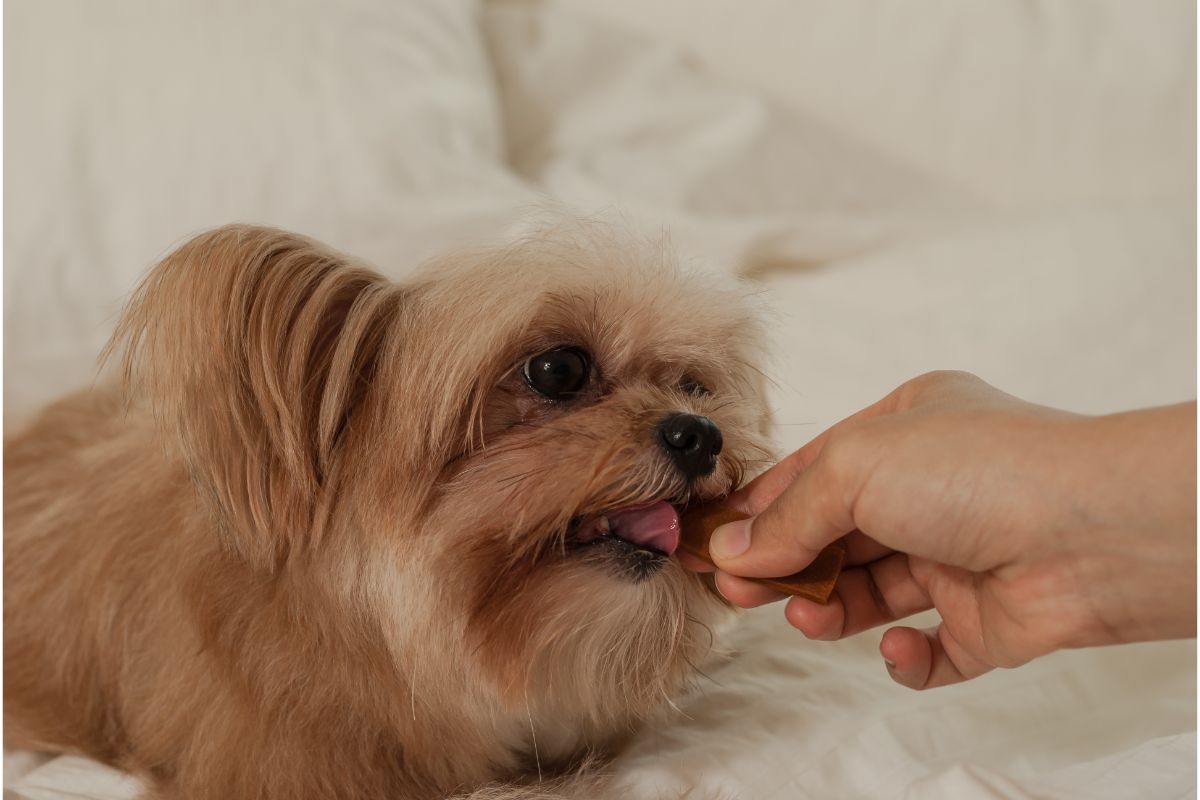Toddlers and dogs are an adorable mix — and an absolute nightmare to deal with!
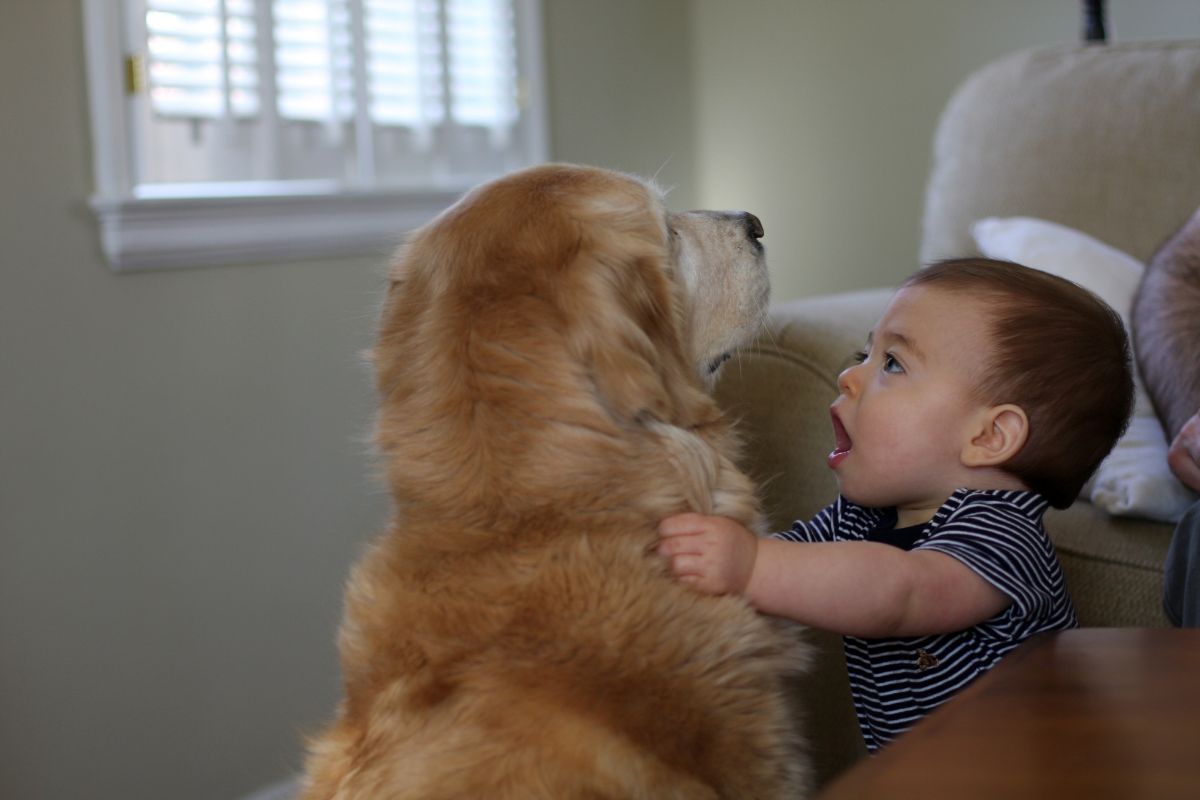
Children and animals seem to have an endless supply of energy, a total lack of personal boundaries, and an uncanny ability to knock something over when your back is turned.
After the stress of introducing your dog to a newborn baby, you might have thought the hard work was done. But a toddler is a whole different problem to deal with.
As they grow more confident in themselves and their movement, toddlers become little whirlwinds of energy.
Toddlers and dogs can get along happily, but it’s a relationship that has to be carefully supervised.
In this guide, we’ll explore some useful strategies to help keep your home safer for both toddlers and dogs.
Never Leave Them Together Unsupervised
Your dog might have never bitten another person or even snapped at the toddler — but that doesn’t mean it can’t happen.
All dogs are capable of biting and even the best behaved dogs can lash out when they feel provoked.
First and foremost, that means you should never fall into the trap of thinking: “My dog won’t bite”. This can lead to a false sense of security.
When you aren’t on the lookout for bad behavior, you can’t see it coming.
But when you’re aware that biting can happen, you can do what you can to prevent it. This applies to all types and breeds of dogs.
It’s vital to move past the mindset that some dog breeds won’t bite. It just isn’t true.
In addition, never fall into the trap of thinking: “My toddler won’t provoke the dog to bite”. Toddlers are physical and emotional beings that struggle to recognize boundaries.
They might not intentionally encourage a dog to bite, but it can still happen.
It’s important to recognize the signs and body language that indicate a dog is getting annoyed.
We’ll cover this in more detail below, but, essentially, when you recognize subtle stress signals, you can act quickly to prevent accidents.
However, you can’t recognize these signals if you aren’t in the room. Dogs and toddlers should never be left together unsupervised.
If the toddler is sleeping, the dog should not be able to gain access to that room.
No one wants to think the worst of their dog, but biting is a response that all dogs are capable of.
By keeping this in mind, you can ensure a safer environment for both your child and your pet.
In summary
- Step away from the mindset of “my dog won’t do that”.
- Learn to recognize subtle signals that your dog is getting annoyed or upset.
- Remember that all dogs are capable of biting, no matter the breed, age, or temperament.
- Reassess your mindset if you become complacent. If you aren’t in the room, you don’t know what’s happening.
- Never leave your dog and toddler together unsupervised.
- If the toddler is asleep, the dog should not have access to that room.
- By remembering that all dogs have the potential to bite, you can protect your child better around new dogs.
Make Time For Your Dog And Toddler To Interact Safely
Making time for the dog and toddler to interact safely can help them foster a close bond. This is rewarding for both of them!
Plus, by introducing your toddler to the correct ways to interact, they’ll better understand how to behave around the dog.
Inside the home, your toddler can help with feeding the dog and playing with the dog. You can even introduce your toddler to some basic dog training!
This is a better way to get them to interact than to simply let them play together.
Feeding time is an excellent opportunity for the two to spend time together. Plus, you can use the opportunity to teach the toddler some basics of feeding etiquette.
Teach the toddler not to interrupt the dog when they’re eating and not to feed the dog off their own plate.
You will still need to supervise feeding time, but there are ways to get your toddler involved.
If they’re old enough, they can scoop some of the food into the bowl themselves or they can hold the bowl while you get the food prepared.
The toddler can also play a role at treat time! Teach them to hold the treat close to the dog’s mouth and to keep their palm flat.
To make this time extra special, set aside a type of treat that only the toddler is allowed to give to the dog.
During playtime, ask older toddlers to throw balls for the dog to fetch. As long as you’re supervising, playtime can be a fun experience for dogs and toddlers.
Just keep an eye on everyone’s emotions so you can react appropriately.
Toddlers can also be involved in very basic levels of training. Ask them to help out when you’re teaching the “touch” cue or see if you can get the dog to perform a few basic commands.
In summary
- Find ways to encourage positive interactions between the dog and the toddler.
- Reward the dog for positive and calm interactions.
- Involve the toddler in feeding time so they’ll learn the correct etiquette around a hungry dog!
- Older toddlers can play fetch with the dog.
- Playtime under adult supervision is a good chance for the toddler and dog to bond (and burn off some energy).
- If the toddler is in a pushchair, teach the dog to walk calmly beside you. Do not tie the leash to the pram.
Learn how you can also introduce your puppy to your resident cat.
Recognize Your Dog’s Behavior And Signals (Even Subtle Ones)
Understanding your dog’s behavior can help you better predict their actions.
When the dog and toddler are together, you’ll naturally be on the lookout for obvious signs of distress.
If the dog starts to growl or snap, you’ll know to act quickly, break up the interaction, and keep the dog and toddler separate.
Ideally, you should be intervening before the dog starts to lash out. This means you need to recognize the subtle signals that the dog is feeling anxious or upset.
When you can read your dog, you can better ensure that everyone is happy.
With that in mind, let’s take a look at some signals to keep an eye out for:
- Yawning when the dog isn’t tired. Yawning is an easy sign to spot and a general indicator that it’s time to break up play. If the dog isn’t tired, yawning can be a sign of distress. But even a tired dog might appreciate being separated from a busy toddler!
- Excessive panting. Another sign that is often easy to notice and a reason to bring playtime to an end anyway. Excessive panting is sometimes a way for the dog to show it’s stressed. But it might be a sign your dog is getting too hot or too tired.
- Avoidance behavior or pacing. The dog trying to walk away from the toddler or pacing back and forth is typically a sign that they’re feeling unhappy. Separate the dog and toddler, so the dog can get the breathing room it needs.
- Whale eye. Whale eye refers to when the whites of the dog’s eyes are showing. The dog will often be turned away from the source of stress (the toddler), but looking back at them.
- Lip licking when the dog isn’t eating or drinking. This is a subtle signal but a common one. If the dog is flicking their tongue frequently while interacting with the toddler, they’re probably getting stressed. Look out for it at all times, but especially when the toddler is physical.
- Raising a paw. Raising a paw can be a sign that a dog is feeling anxious or apprehensive. This will often be accompanied by tense body language.
- Ears back. General tension throughout the body can be difficult to spot during a busy playtime, but keep an eye on the ears and face. Ears held back is a sign of stress, as is a furrowed brow.
By detecting these behaviors, you can act quickly to stop problems from escalating.
In summary
- Learn to recognize subtle indicators that the dog is feeling stressed.
- These indicators will often come before snapping, growling, and barking. By intervening early, you can prevent further problems.
- When the dog is showing subtle signs of stress, separate them from the toddler.
Speak To Your Toddler About How To Behave Around The Dog
While training the dog is one part of the equation, it’s important not to neglect discussing good behavior with your toddler.
Dogs and toddlers can both be irrational, which is why you need to work on both sides of the equation.
We’ll be honest — at times this is likely to be a frustrating conversation. Toddlers aren’t used to controlling their emotions or their actions.
Toddlers tend to grab anything they want. This can be toys, food, and, sometimes, animals. While the toddler won’t mean any harm, the dog can be startled by the act of grabbing.
They can then lash out.
Teach your toddler to be gentle around the dog.
Demonstrate with a test subject, such as a doll or stuffed toy. Help them understand how to moderate their play so that everyone is having a fun (and safe) time.
And when your toddler gets it right, make sure to praise them! Alternatively, when the toddler starts to play rough, make sure they know that wasn’t the way to behave.
Don’t punish them, as this can reinforce bad behavior. Just let them know the play wasn’t appropriate and separate them from the dog.
Like all things with a toddler, this is a job that requires patience and repetition. Over time, they should start to understand how to react around the dog.
Although you should still keep an eye on them — and be ready to intervene should something go wrong — the toddler will learn to moderate their actions.
Speaking to your toddler about maintaining boundaries around dogs has benefits outside the home.
Your dog might be wonderfully trained, but you can’t speak to the behavior of other dogs your toddler might come into contact with.
The rough play your pet tolerated might not go over well with a new dog!
In summary
- Speak to your toddler about playing gently with the dog and maintaining boundaries.
- The toddler isn’t allowed to take one of the dog’s toys. If the dog takes a toy, the toddler shouldn’t retaliate. Instead, they can try and get the toy back using an exchange of treats.
- Prevent the toddler from walking around the house with food or offering food during meal times.
- Practice gentle petting with a stuffed toy before introducing the toddler to the dog.
- When play starts to get rough, remain calm and redirect the toddler. Don’t punish them, but let them know they can’t behave that way around the dog. Find another place to play that allows them to unleash their energy!
- Everyone in the house should follow the rules you give the toddler, even guests. Don’t allow other people to interact with the dog in a way you’ve told the toddler is wrong.
Give Them Time Apart
Sometimes, dogs need a bit of time to themselves! A dog in the house with a toddler is probably exposed to a lot of noise and energy that they can’t always cope with.
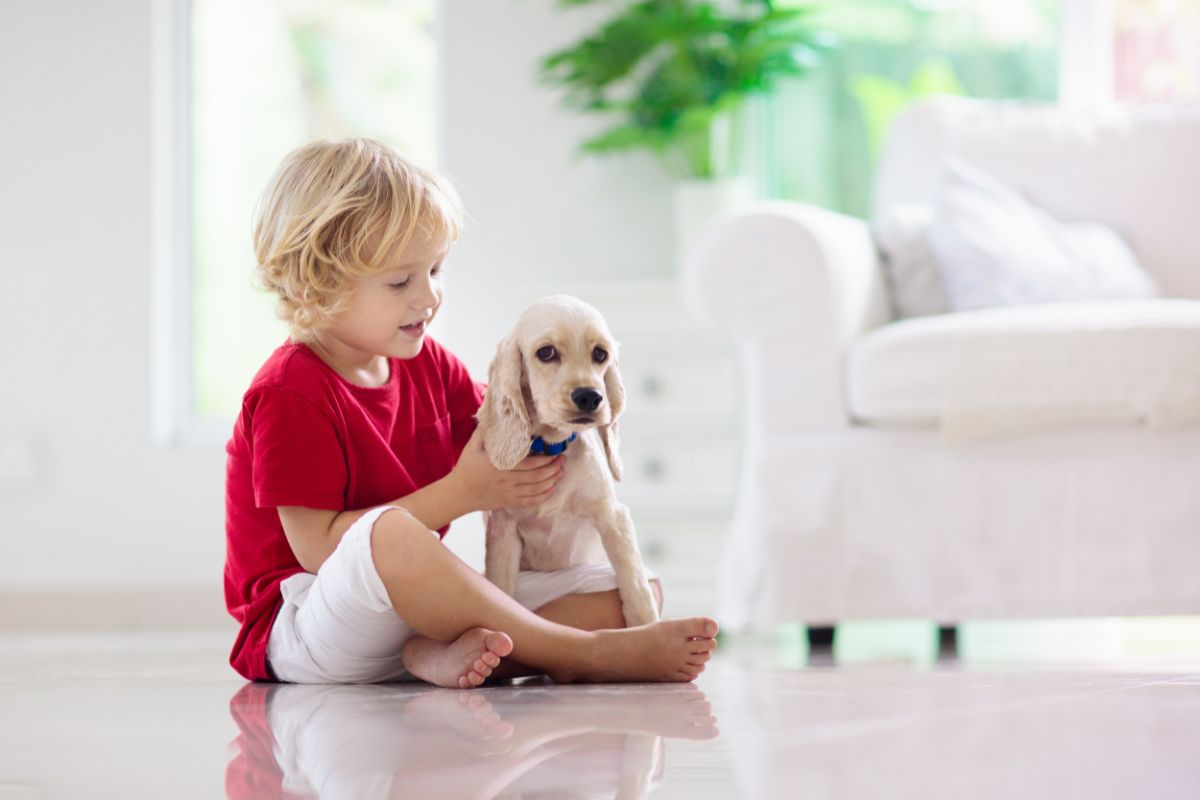
Once the toddler has started moving freely, the dog will have a new physical presence to work around.
To prevent the dog from feeling overwhelmed, they’ll need some time away from the toddler. This will allow them to relax, enjoy a moment of calm, and appreciate some physical space.
Sound familiar? Most parents of toddlers can relate!
You can create these areas within the house. Baby gates are a great way to provide a space for the dog that is just for them.
An indoor kennel is another good suggestion. Fill the space with a comfortable bed and your dog’s favorite things.
It can also be a good idea to get the dog out of the house. Spending a few days every week in a doggy daycare can give everyone a bit of breathing room.
If this isn’t possible, you might have a friend or relative who can care for the dog during the week.
When the toddler has gone to bed, spend some quality time with your dog. Go through a bit of training or play a quick game of fetch.
Anything that allows the dog to express their own needs.
Equally, there will be moments when your toddler wants a break (even if it feels like they never do)! It’s vitally important to keep a dog away from a sleeping toddler.
In summary
- Make time during the day for the dog to be alone.
- Use a baby gate to create zones for the dog and the toddler. Fill the dog’s zone with their favorite things.
- For social dogs, consider sending them to a doggy daycare a few times during the week.
- Or ask a friend or relative to care for the dog from time to time.
- When the toddler is sleeping, spend time with the dog. Play a game that meets their needs.
Don’t Shy Away From Help
No matter how well you follow these guidelines, dogs and toddlers are still a mix with the potential for disaster.
When a dog starts to show aggression, you need to act immediately. Separate the dog from the toddler and speak to a professional.
If your dog frequently signals stress around the toddler, act before the problem escalates. Speak to a dog trainer about your specific scenario.
They can then provide advice that is tailored to you.
But professional training shouldn’t be seen as a last resort.
A toddler and a dog bring enough stress on their own. Put them under the same roof and you might find you never get a moment to yourself.
A professional dog trainer can help you prepare for raising a toddler with a dog.
They can work with the dog to teach good behavior before showing you how to replicate the results at home.
And one final piece of advice: don’t try and force a relationship between the two! We all love to see dogs and children getting along. It’s an adorable sight and a sign of a special bond.
But toddlers and dogs won’t automatically like each other.
Allow the bond to grow naturally as they both spend more time together. Trying to force a relationship can result in resentment and dislike.
By simply giving them space to interact and exist, the relationship will naturally grow.
In summary
- Don’t be afraid to get help! Dog trainers can help you prepare the dog for the arrival of a new child.
- If the dog is often wary or stressed around the toddler, seek professional guidance.
- If the dog is aggressive towards the child, get help right away. Even a minor bite can have serious repercussions.
- Don’t try to force a relationship. Allow the toddler and dog to bond on their own time when they’re comfortable together.
Conclusion
As your child grows from baby to toddler, they start to become more physical and more vocal.
And while we love seeing our children come into their own, at this age, they often struggle to control their energy and responses.
This can be particularly tricky for a dog to deal with.
Toddlers struggle to understand dog body language, while dogs can resort to aggressive behaviors when feeling stressed.
Dogs and toddlers can live happily together, but you have to make room for both of their needs.
It won’t always be easy, but with care and guidance, your toddler and dog can happily coexist.
Frequently Asked Questions
Is It Safe To Have A Dog And A Toddler?
It is safe to have a dog and a toddler but they should never be left alone together and you must monitor any interactions.
If the dog starts to display signs of discomfort, intervene before the problem can escalate.
How Do I Get My Dog And Toddler To Get Along?
If you want your dog and toddler to get along, you need to teach your toddler boundaries. They shouldn’t disturb the dog when they’re sleeping, interrupt feeding time, or tease the dog.
Teach the toddler to be gentle when playing and get the dog used to physical handling with frequent interaction.
But you shouldn’t try to force the bond. Allow the pup and the child to get to know each other on their own time and grow comfortable with each other’s presence.
- How To Teach Your Puppy Their Name Easily! - July 18, 2023
- Is Your Puppy Counter Surfing? Find Out How To Stop It! - July 18, 2023
- How To Train Your Puppy For Car Rides: Everything You Need To Know - July 18, 2023


